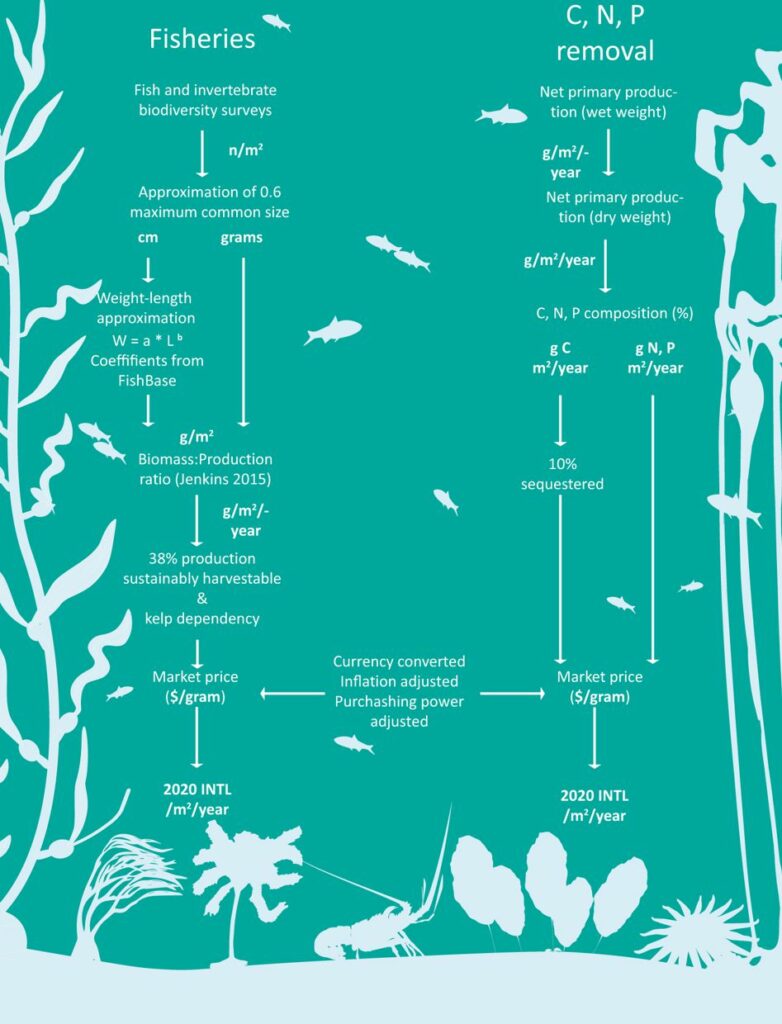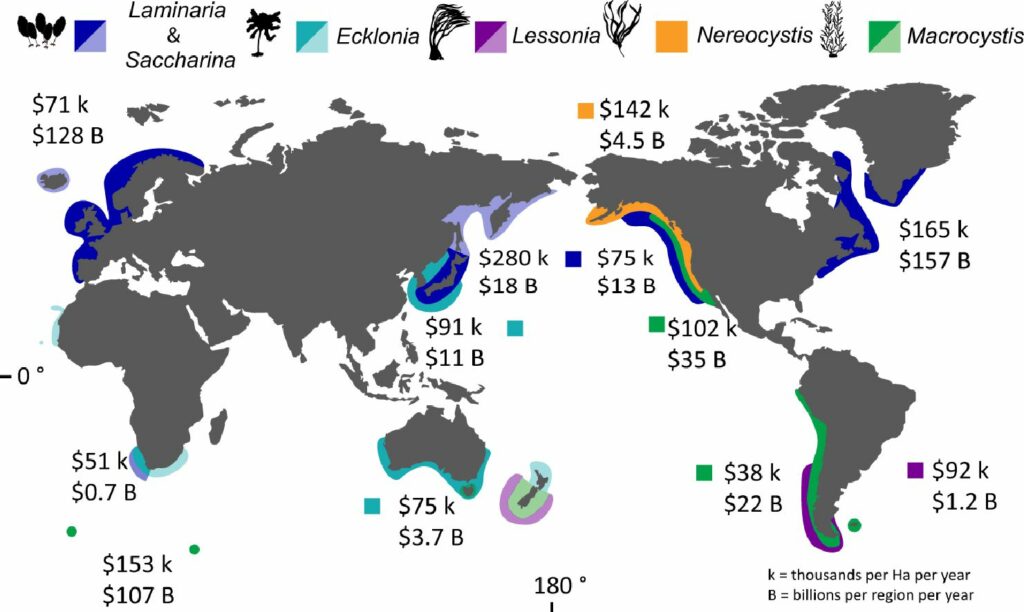Kelp forests are vibrant and valuable ecosystems that support a wealth of biodiversity and provide numerous benefits to society.
Recent research has shed light on the previously underestimated value of kelp forests, which are lush underwater gardens of brown seaweed found in shallow ocean waters off one-third of the world’s coastlines.
The research, led by UNSW Sydney, suggests that these kelp forests offer tremendous value to society through services such as fisheries, nutrient cycling, and carbon removal.
The study, published in Nature Communications, found that kelp forests collectively provide an estimated $500 billion in ecosystem services each year, although the precise amount varies depending on the type of kelp and region.
Leading the study from UNSW Science is Dr. Aaron Eger, a marine ecologist who also serves as the founder and director of the Kelp Forest Alliance. The Kelp Forest Alliance is a non-profit organization that focuses on research to promote the protection and restoration of kelp forests across the globe.
“We have a deep cultural connection to this ecosystem. But,” according to Dr. Eger, “our understanding of the economic value has been lagging behind other ecosystems competing for conservation funding.
“Now, with this study, for the first time, we have the figures to demonstrate the considerable commercial value of our global kelp forests and the financial impetus for advancing kelp conservation and restoration efforts.”
Kelp forests are rapidly declining worldwide despite their significant commercial value, primarily due to threats such as sea urchin overgrazing and climate change. In places like Tasmania, up to 95% of the kelp forest canopy has already vanished. Without a comprehensive understanding of the return on investment, crucial restoration projects and management strategies could remain unfunded.
“Multiple drivers increasingly threaten kelp forests, so we must understand their economic contribution if we hope to accelerate efforts to save them and the more than 1800 species that rely on them,” adds Dr. Eger.

“These findings are also highly relevant as we have just launched the Kelp Forest Challenge, a global call to protect and restore four million hectares of kelp forest by 2040.
“By strengthening our understanding of their value, we can hopefully motivate governments, businesses, and society to reach these target values.”
The overall significance of kelp forests
In order to conduct the study, the researchers used surveys of fish and invertebrates as well as measurements of yearly net primary output, or growth, to analyze the contribution of kelp forests to ecosystem services.
For this growth to happen, things like carbon, nitrogen, and phosphorus must be taken out of the seawater. This cleans the water and helps with carbon sequestration, which is the process of putting captured carbon into natural reservoirs.
They found that the most important economic value of kelp forests came from fisheries production and nitrogen uptake, which each brought in an average of $29,000 and $73,000 per hectare, each year. Even though the estimate for carbon sequestration was low ($163 per hectare per year), it was similar to seagrass meadows and land forests from an ecological point of view. Its combined ability to absorb 4.91 megatons of carbon dioxide annually is expected to grow as additional kelp forests are surveyed.
“This is just a baseline study, so we expect the approximations will get more accurate as the field advances,” Dr. Eger points out. “There were also many other services we didn’t assess, including tourism, educational and learning experiences, and kelp as a source of food, so we anticipate the actual value of kelp forests in the world to be higher.”

The results could lead to new ways to manage the oceans and protect them, such as a credit system for offsetting emissions. Dr. Eger adds that it may also inspire governments to create fresh markets for maintaining and repairing kelp forests.
“Through the study, we found 740 million people live within 50 km of a kelp forest. So these systems have a significant role to play in supporting these people’s livelihoods and vice-versa,” Dr. Eger adds. “The more the public appreciates these high-value ecosystems living in their blue backyards, the easier it becomes for policymakers to support their protection.”
Even though the research isn’t meant to make kelp forests more valuable, Dr. Eger says it does help bring attention to the need for more money to be spent on protecting kelp forests.
“Putting the dollar value on these systems is an exercise to help us understand one measure of their immense value.
“It’s important to remember these forests also have an intrinsic, historical, cultural and social value in their own right.
“Hopefully, it helps start more conversation about the role of these ecosystems in maintaining healthy oceans and ultimately healthy coastal communities and cultures.”
Source: 10.1038/s41467-023-37385-0
Image Credit: Unsplash
